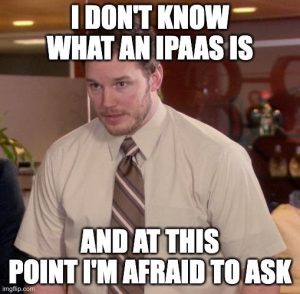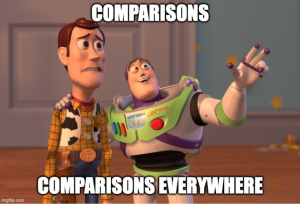
iPaaS: Welcome to the New Age of Integration
Apart from being a fancy buzzword, it is a great step forward within the Enterprise Application Integration area. Everyone is speaking about them, but what are they?
iPaaS is not just a jargon but a leap of Enterprise Applications Integration. Sure, they have created an immense buzz in the market, but what actually are they?
Enterprise iPaaS: What are They?

An Enterprise iPaaS (Integration Platform as a Service) is a suite of cloud services and technologies that allows you to implement integration projects involving any/multiple combinations of cloud and on-premises systems/applications.
An iPaaS is considered an Enterprise iPaaS (EiPaaS), if it:
- Is designed to support enterprise-class integration initiatives that require high availability, disaster recovery, security, SLAs, and technical support from the provider
- Provides user experiences that enable end-users to develop and manage integrations without the need to engage the EiPaaS provider’s professional services
- Offers capabilities for executing multiple integration scenarios, including almost real-time application integration, batch data integration, and B2B integration
- Provides API management capabilities to support integration
- Is fully managed by the vendor for patching and upgrades
- Is supported by a broad go-to-market strategy that targets targeting buyers of a strategic integration platform rather than focusing on specific integration scenarios, industries, or geographic areas
Market Overview
Organizations are adopting EiPaaS as strategic alternatives to classic integration middleware. Gartner estimates that the iPaaS market generated $3.47 billion in revenue during 2020 and grew by 38.7% compared to 2019. The expectation is that the iPaaS market will exceed $9 billion in revenue by 2025.
Traditional integration approaches and on-premises integration technologies cannot fully support the complexity and pervasiveness of integration or the agility and time to value required to overcome today’s Integration challenges.
Even during the global recession caused by COVID-19, the adoption of EiPaaS is still one of the most strategic initiatives that companies are focusing on. Employing a standardization on a single, strategic EiPaaS minimizes complexity and keeps costs under control.
Considerations for Choice
The EiPaaS market is highly fragmented, fast-evolving, and overcrowded, which makes a choice very difficult.
An increasing number of organizations are adopting EiPaaS offerings as strategic alternatives to classic integration platform software for a growing number of scenarios.
The enterprise integration leaders are looking for a strategic integration platform for multiple, often business-critical, integration projects. In a growing number of cases, organizations purchase an EiPaaS to support an integration strategy modernization initiative as a core component of their strategy.
When selecting an EiPaaS, it is crucial to consider:
- Whether the platform is for short-term tactical or long-term strategic use
- The type and number of systems and applications to be connected
- SLAs and quality-of-service requirements
- Security and regulatory compliance needs
- The geographic location of the EiPaaS data centers and support centers
- The ability to deploy the EiPaaS in a hybrid model
- The availability and cost of iPaaS skills from the provider and external service providers
- The long-term cost expectations and available budget
You should start the selection process after developing a thorough understanding of your requirements and priorities, and we can definitely help you with that.
Comparisons Everywhere
Every day, everywhere, we are overwhelmed with comparisons. We rarely make a purchase without comparing the available options. Comparisons such as Android vs. iOS, Xbox vs. Playstation, and Coca-Cola vs. Pepsi are often a cause of contention.
Also, in the IT world, it’s common to compare Boomi, MuleSoft, SAP Integration Suite with a multitude of other integration solutions out there.

But the real question is: Does a Winner Really Exist?
While this could be a matter of debate for consultants and tech enthusiasts, enterprises, and, by that extension, CIOs often do not have the luxury to make this choice. This is especially true with large enterprise organizations or for any enterprise that has experienced inorganic growth. Their landscape isn’t made of a single color hue; it’s more like a rainbow: different systems, cloud, and on-premise, from different vendors all coming together to deliver the best possible value for their business. And most of the time, more than one iPaaS comes along with a product like SAP Integration Suite with SAP Products or MuleSoft with Salesforce, as an extension of the product itself.
But this is not always the right choice.
Let’s say a company has primarily been a Boomi or MuleSoft client and a new iPaaS comes up – e.g., SAP Integration Suite along with SuccessFactors. In such cases, it’s often the best choice to recreate content packages with the new iPaaS on the existing strategic iPaaS.
That’s said, did we just state the opposite of what we established in the previous point? Yes, that’s where we are getting at!
To Conclude
In a modern enterprise, the choice of iPaaS must be contextual and value-driven.
There isn’t a “one size fits all” solution to the problem. You can leverage our sound cross-industry and cross-product experience in enterprise integration. We can guide you in drawing your own strategy by assessing your as-is Integration Landscape on this journey. Lastly, we will help you to define the To-Be Integration Landscape tailored to your Integration needs, along with an evolution strategy and roadmap to achieve it.
